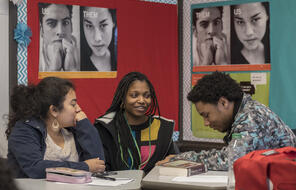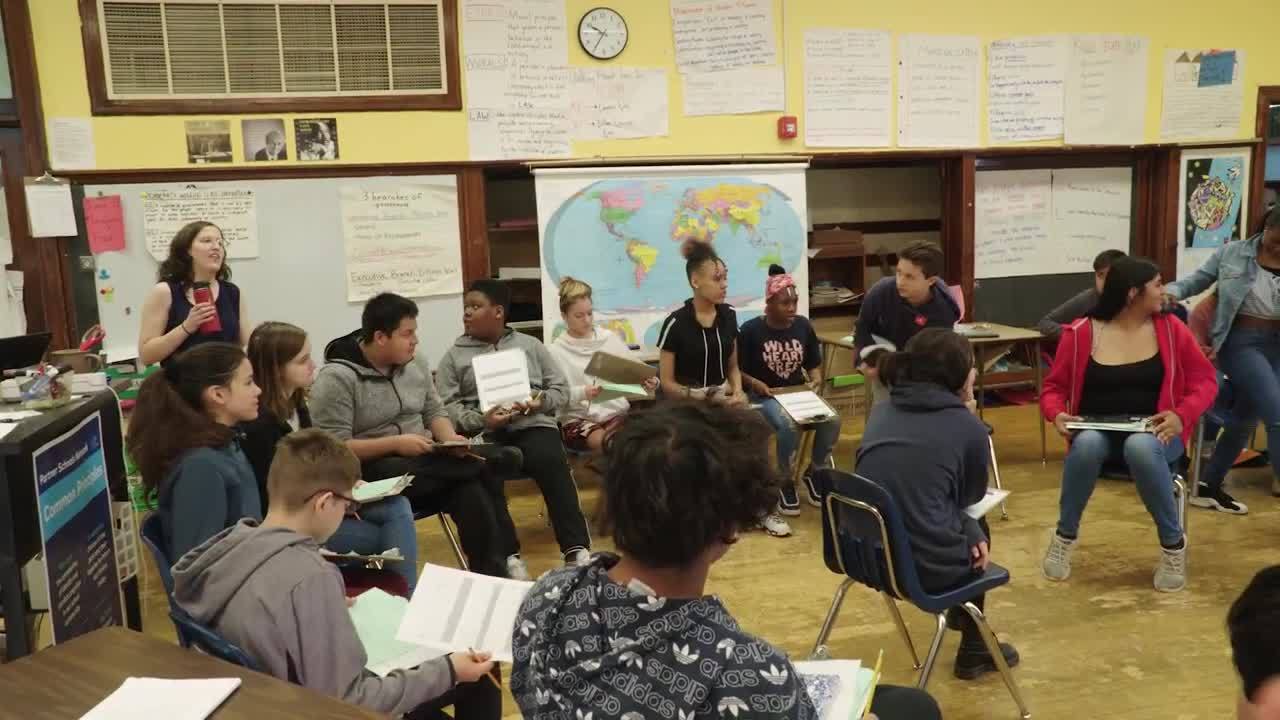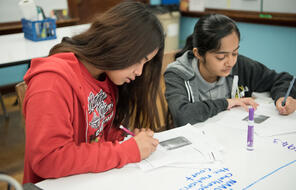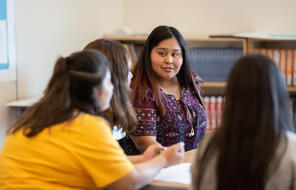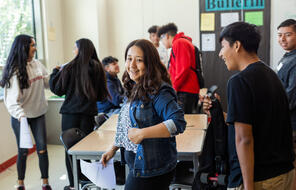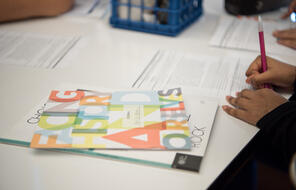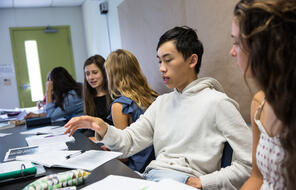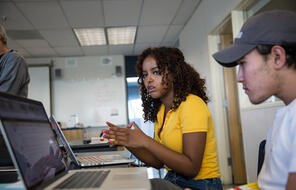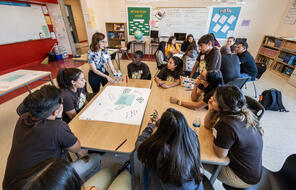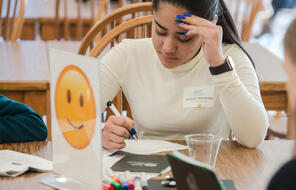In fishbowl, there's an inner circle and an outer circle. So the inner circle are the few students who are brave enough to share out their thinking. The outer circle gives students who might be more leery, a little bit of time to think and process what is being said in the inner circle. And they have the opportunity to tap in to get their voice heard, and they tap in for somebody who has already shared so that we have that equity of voice in the classroom.
Any time that my students are engaging in fishbowl activity, they feel empowered. And so they know that I take a step back and that they take a step forward, but they know that I'm there for that facilitation and really it's a language acquisition process. There are many times in fishbowl and seminar that in preparing for that and analyzing the sources where students are trying to find their words and even within seminar trying to articulate themselves, and they have these ideas and they have these fresh perspectives, but what they don't necessarily have is the academic language and vocabulary that goes with it. And so I'm excited to hear their processes and to hear them struggle through understanding exceptionally difficult histories, but they do such a great job with it always. And so I'm excited to hear their fresh takes on it and apply a new level of precision of language to it as well.
[VIDEO PLAYBACK]
- Start thinking about if you would like to start in the fishbowl. We're going to start with the first two set of questions. So if you want to go back up to those two questions to see if you are prepared to speak to something, we're going to have about five to six chairs in the center fishbowl and then the rest of us are going to be on the outside.
So take about a minute think about are you in a place where you're ready to share out? And remember with fishbowl you can tap someone out so you're not in there the whole time. If you are ready to talk in the middle, take your chair into the middle, otherwise take your clipboard any resources you need. Turn your chair into the center. Try to be as smooth as possible about it.
A lot of you were talking about great things. So starting with those first two questions. Daniel, right here. Can I get you to read them out loud again for us? And then anybody in the center can start.
- How does the majority opinion explain its ruling in the case which justification does the majority provide for maintaining segregation?
- One of the things that our group talked about was like even though you want there was equal rights within political terms or whatever, but there's not like equal rights within social life. And it's like you can't force one race to be the same as another.
- With the idea of equality, the majority rule didn't really fit with this idea of equality because it was only supporting them. And it wasn't really supporting like Plessy, et al. and that idea of power being taken advantage of.
- Johnny, nice job. Let's go.
- The first section of Justice Henry Brown delivered a majority opinion. It says, laws permitting and even requiring the separation. And I think that line relates to the second question of what justification does the majority provide for maintaining segregation. And it's saying that they're not really targeting the inferior race. It was clearly what's going on.
- It doesn't target a specific race, but then people still use that law anyways in order to target races. So I guess my question is, what is, I guess, the danger of being colorblind and not having specific laws?
- Well, if you're colorblind, you don't see color. You don't see my experiences either. So--
- Basically what you're saying is the Constitution is, I guess, in a way racist, I guess, and only includes a certain amount of, I guess, the white people, I guess. And it says what the court decided our Constitution is colorblind and neither nor tolerates classes among citizens.
- I don't necessarily think that the Constitution is racist, but I think it did set it up so that people could later influence it to be racist. They never really have specific laws in the original Constitution that dictate certain laws that differ based on race, but I did think it was important to look at based on when the original Constitution was actually written. It was written during the time where slavery was still a huge thing, and it was written during the time where the only people that could really make choices and have power were white men.
- All right. Really strong everyone. Thank you so much.
[END PLAYBACK]
Facilitating that, it started to feel more just like a conversation, which is something that we're looking to help students acquire are those conversational skills in addition to the academic more literacy-rooted skills. Communication is obviously integral in that, but it's not always explicitly taught. Building those relationships is so essential in students. Trusting enough to be vulnerable in conversation that requires honesty, and it requires you almost doing something that feels uncomfortable in order to grow. And so if they don't have that foundation of trust, it becomes a lot more difficult to engage students.
Some students don't want to tap into the fishbowl because they don't feel that they are good enough or that their thought is articulate enough. So part of that rapport building is also necessary for that encouragement for the student that I can go to and say, hey, that idea I just went around the room nobody had it, but you did. And because they value their relationship with me and because they value their own voice ultimately, that encouragement helps them to engage.
